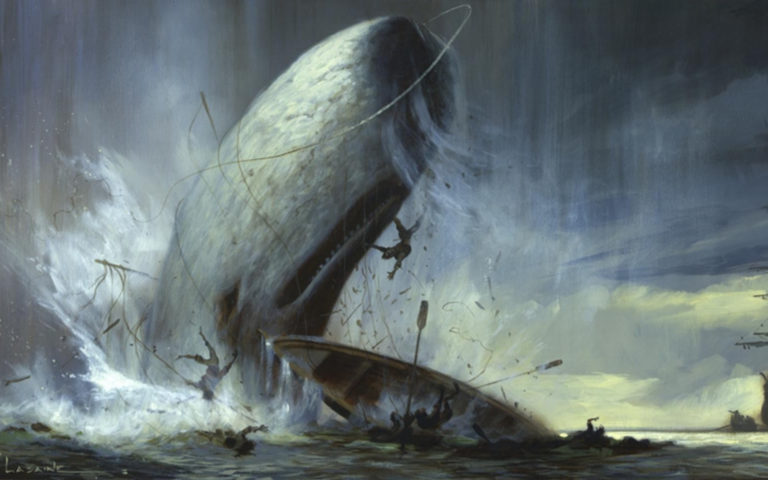
By Ted Ross, Boulder Waterkeeper
As we all emerge from the anxiety of the coronavirus quarantine it is time to consider how our world might be changing after the carnage of the pandemic and toxic political partisanship and late-stage capitalism that has been the essence of the global culture for the recent decades. We Waterkeepers can use this time of transformation to define goals and aspiration targets that will define our vision, guide our plans, and focus our futures. We can use this time to influence the directions and desires of a new emerging environmental culture focused on restoration and resilience instead of extraction and consumption.
Great accomplishments are often the result of great obsessions. The greatest metaphor for obsession is Captain Ahab’s hunt for the ‘nameless, inscrutable, unearthly thing’ that is the White Whale of Moby DIck. His monomaniacal focus on the whale is the driving engine of his madness and pursuit. The ultimate success or failure of his quest is less relevant than the illustration of how obsession and fanaticism can focus and motivate effort and behavior.
Moby Dick is Ahab’s Leviathan Dream that defines his passionate pursuit of redemption and reconciliation. Leviathan is the name for the ancient and formidable beasts that challenge the better angels of our nature. A leviathan is a primeval monster that is a metaphor for impossible goals that can define and or consume one’s attention and effort.
Any and all organizations and cultural movements work best with a clarity of purpose and direction. For the Waterkeeper Alliance and for local Waterkeepers in the United State it is time to think big and embrace the ‘White Whales’ of our future. To paraphrase Barry Goldwater “Extremism in defense of environmentalism is no vice. Moderation in pursuit of environmental justice is no virtue.” Small advocacy organizations may not have the resources of commercial corporate capitalist entities in our economic system, but they do have the opportunity to capture the high ground and lead culture and community in the direction of right, principals, and values.
Being a Waterkeeper is often a daily focus on the small unobserved and rarely acknowledged efforts that enhance the health of our watersheds each and every day, but rarely capture much attention in our social discourse. As the economic, political, and cultural wheels turn after COVID-19 it will be important to identify and focus attention on the Leviathan Dreams that could shape and define our future and the future of our world.
Over the last century there have been many circumstances of structural environmental debasement that demand our consideration. The efforts to eliminate and restore these continental level hydrological mistakes should be the ‘impossible’ targets of all those who care for the integrity of our watersheds. Candidates for these watershed Leviathan Dreams are:
Restoring natural salmon runs to Idaho by removing the four lower Snake River dams.
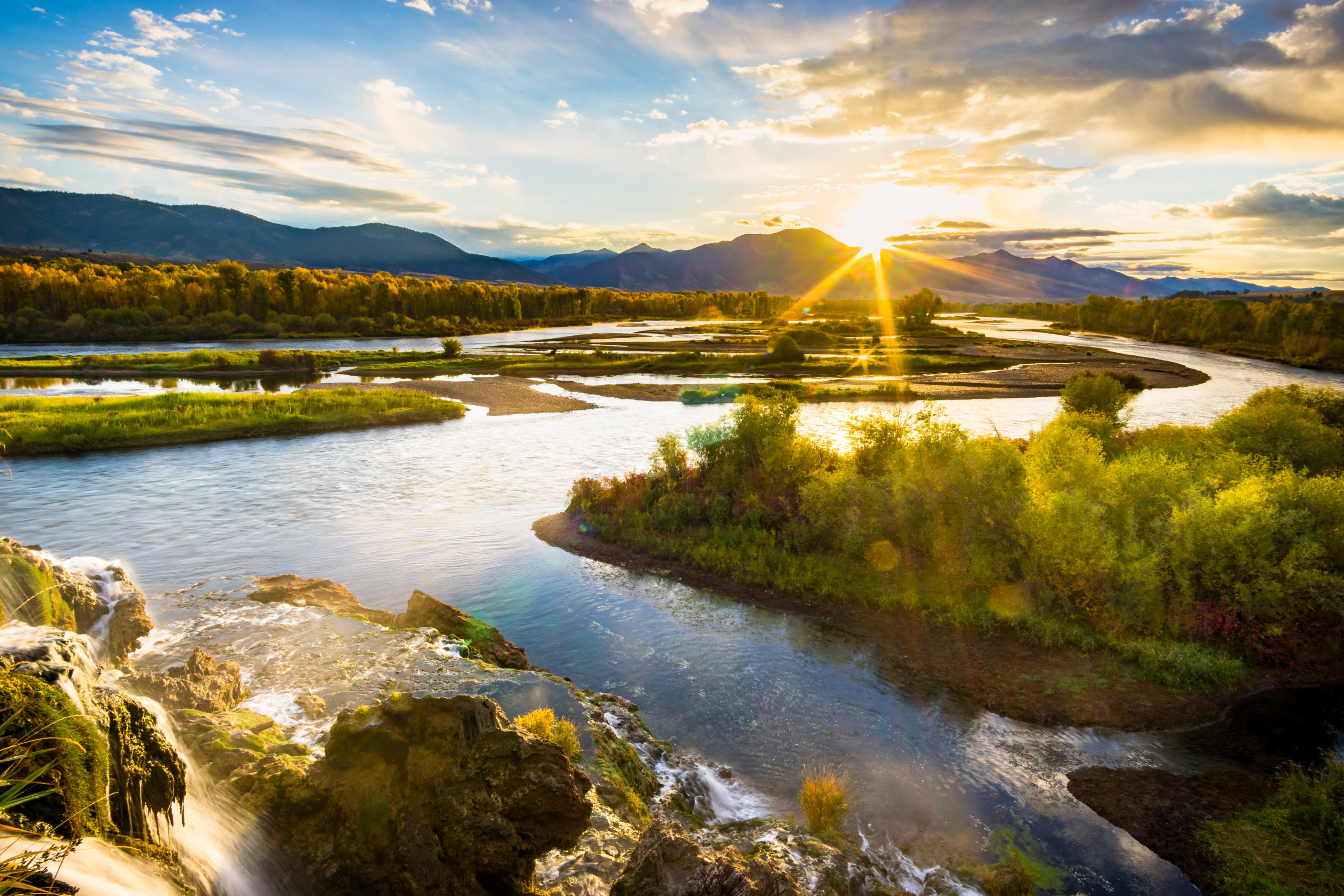
One of the miracles of the natural world is that Pacific salmon swim nearly 900 miles inland and climb over 7,000 feet in elevation to spawn in Idaho. These keystone species have been making this migration for millions of years until we started building dams on the Columbia and Snake Rivers.
Four dams on the lower Snake River in southeast Washington were completed in the 1960s and 1970s. The Lower Granite Dam, Little Goose Dam, Lower Monumental Dam, and the Ice Harbor Dam created a lake approximately 140 miles long and established Lewiston, ID as an ‘inland seaport’. These dams were built at the very end of the epic dam-building frenzy of the U.S. Federal government by the Army Corps of Engineers and the Bureau of Reclamation. The environmental impact and the cost justifications were controversial then and even more so today.
The impact of these dams on natural salmon runs is devastating and the economic benefits including freight transportation and power generation are insufficient to justify their continued existence. Historically the lower Snake River tributaries including the Clearwater River, the Tucannon River, and the Grande Ronde River were epic spawning waters for multiple salmon runs. The Snake River Coho are now extinct and spring Chinook, fall Chinook and steelhead are all listed as threatened or endangered species.
Barge transportation has declined over 70 percent since historical peaks in the 1980s. The meager 3 percent of the region’s electricity production of the dams is both poorly timed as generation mostly occurs during springtime snowmelt when power demand and the cost are being challenged by renewable wind and solar solutions. The operations and maintenance of these dams are operated by the Bonneville Power Authority, a federal agency created by congress in 1937 with annual subsidies in excess of $15B almost certainly could be put to better use.
In recent years the public pressure for dam removal has been increasing and economic analysis suggests that we are nearing a crossover point where the costs of ongoing operations and maintenance are starting to exceed the costs of removal. Public pressure is building to remove these four dams, restore 140 miles of natural river flow, and provide an opportunity for salmon to make it to Idaho.
There is a day in the future when naturalists, artists, indigenous peoples, and all those who love and appreciate the world’s epic migrations will celebrate the return of Idaho salmon to their natural habitat.
Allowing part of the Colorado River to run free by decommissioning Glen Canyon dam.
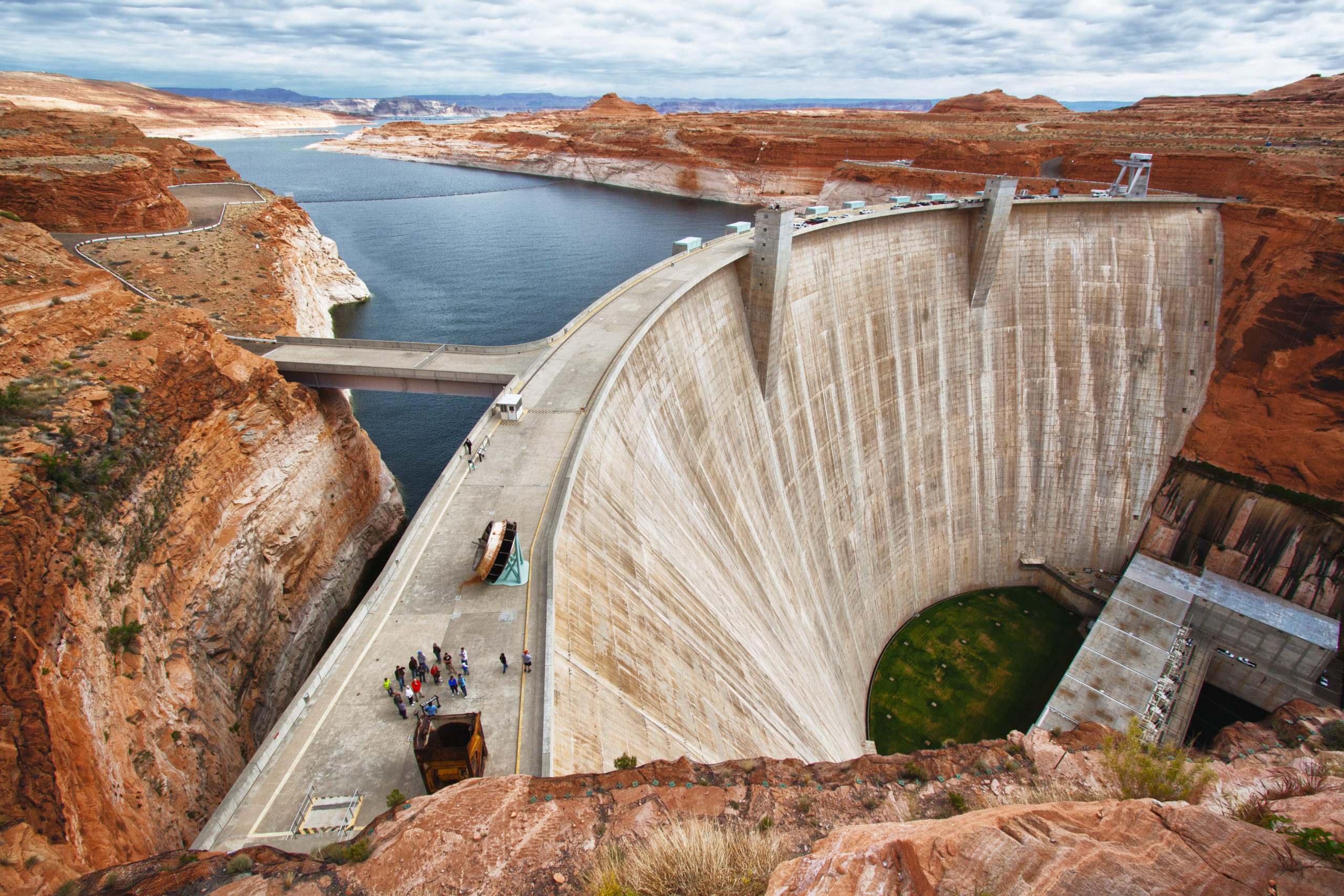
The Colorado River is an iconic feature of the American West. Flowing 1,450 miles from the high Rocky Mountains to the sea it has carved the landscape that we associate with the wild west including mesas, buttes, and the Grand Canyon.
The Glen Canyon Dam, a 710-foot tall concrete barrier across the Colorado River was completed in 1964 creating Lake Powell. It is well understood that the population of the southwest region is growing and that more than 40 million people are dependent on the water resources contained in the Colorado River watershed, but it is not clear that the Glen Canyon Dam and Lake Powell are positively contributing to those needs.
The concept of the dam and reservoir emerged from the euphoria of the dam-building era in the last century when both the science was incomplete and the cultural awareness of environmental issues had not yet emerged in the public consciousness. Responsible leaders acknowledge now that the dam would never have been built if today’s standards had been applied to the planning process.
We now live in a world where the assumptions regarding the natural flow volume of the Colorado River are better defined and the hydrological integrity of Lake Powell is better understood. The Colorado River compact, a 1922 agreement between seven states, was based on a shared assumption that the annual flow is 16,400,000 acre-feet. Current estimates suggest that actual volume is 10-15% less and current drought trends imply potentially less flow in future years as we may be entering an extended drought period.
The combination of increasing demand and flawed assumptions about supply in the Colorado River basin has created intractable challenges regarding water rights, allocation, and usage. In this context the fact that Lake Powell is less than half full, over 560 thousand acre-feet evaporate and 380 thousand acre-feet of water seep out through the porous sandstone basin it is easy to understand the point of view that the dam should be decommissioned and Glen Canyon restored to its prior state.
Allowing Glen Canyon to emerge from underwater will be a powerful statement regarding our respect and appreciation for the integrity of the natural world and a small correction to the economic and cultural demands of consumptive capitalism that have sublimated large portions of the landscape of the American West.
Disconnecting the Mississippi and Great Lakes watersheds by returning the Chicago River to its natural orientation.
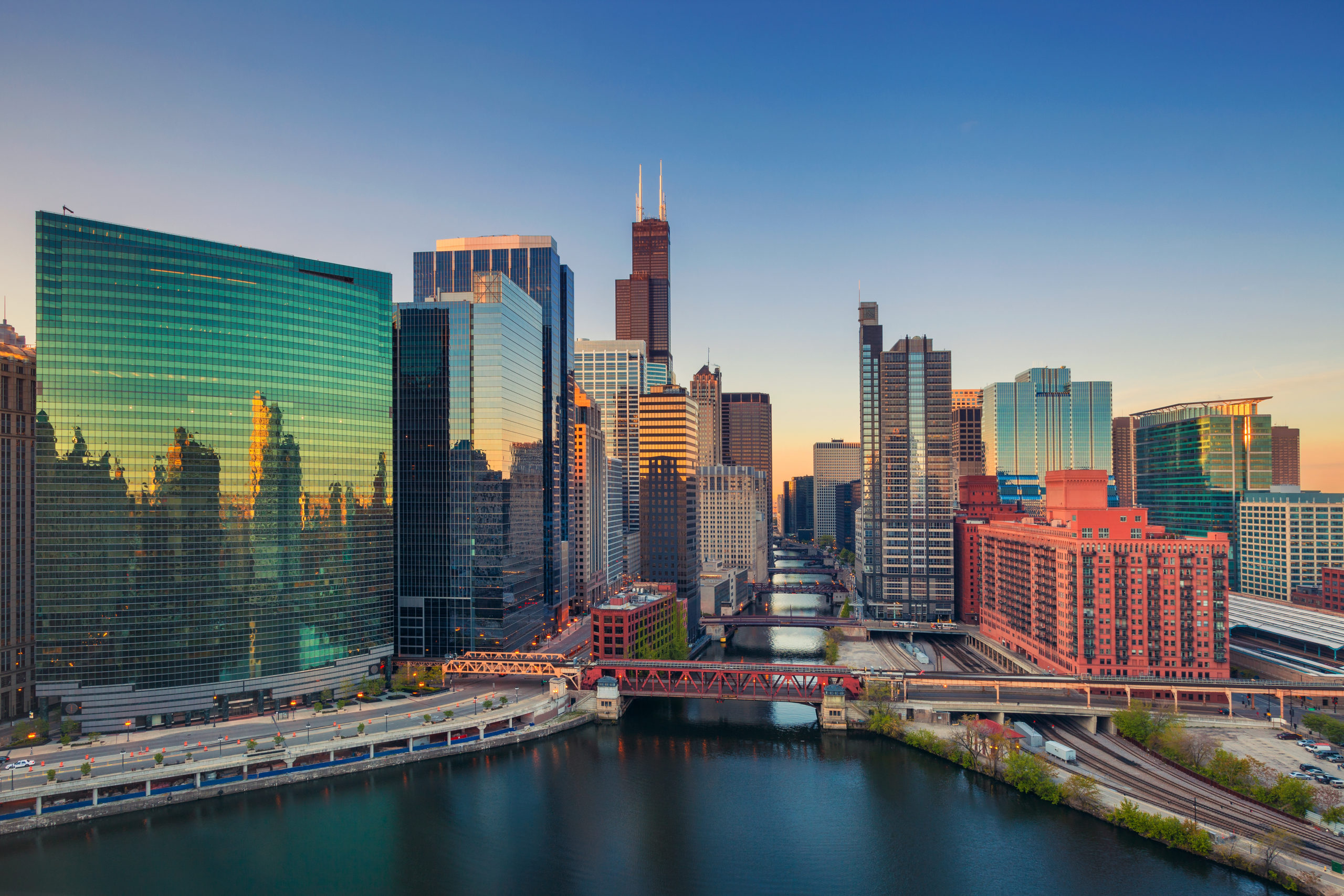
The city of Chicago is built on the ridge dividing the Mississippi River watershed from the Great Lakes watershed. These epic continental defining watersheds are separated by less than 30 miles and less than 20 feet of elevation. In the early years the city allowed urban sewage to flow into the clean-water source of Lake Michigan.
Starting in 1848 the city began diverting water flow into canals in an attempt to send water waste across the Chicago Portage into the Illinois River. This effort was finally successful in 1900 with the completion of the Chicago Sanitary and Ship Canal 28-mile constructed waterway that links the south branch of the Chicago River with the Illinois River, which, in 1999 was named a “Civil Engineering Monument of the Millennium” by the American Society of Civil Engineers.
Since that time millions of gallons of Chicago waste a year have flowed into the Mississippi River basin, and conversely this hydrologic connection has opened up the Great Lakes system to biological disruption. It is estimated that the City of Chicago is the largest single contributor to the anaerobic dead zone in the Gulf of Mexico. In 2009 the State of Michigan unsuccessfully sued the State of Illinois in an attempt to close this connection and prevent the introduction of invasive species like Asian Carp into Lake Michigan and the rest of the Great Lakes.
Based on the Great Lakes and Interbasin Mississippi River Study commissioned by congress in 2010 it is estimated that to re-insert a physical separation and return to flow of the Chicago River to its original direction would require over $18B and 25 years of effort. There are many community, environmental and political groups supporting this effort.
The time has come to address the unintended consequences of decisions made over 150 years ago and return accountability for Chicago’s urban waste and water management issues to the source as opposed to allowing to flow a thousand miles downstream to become someone else’s responsibility.
Restoring the Florida river of grass from Lake Okeechobee to the Everglades.
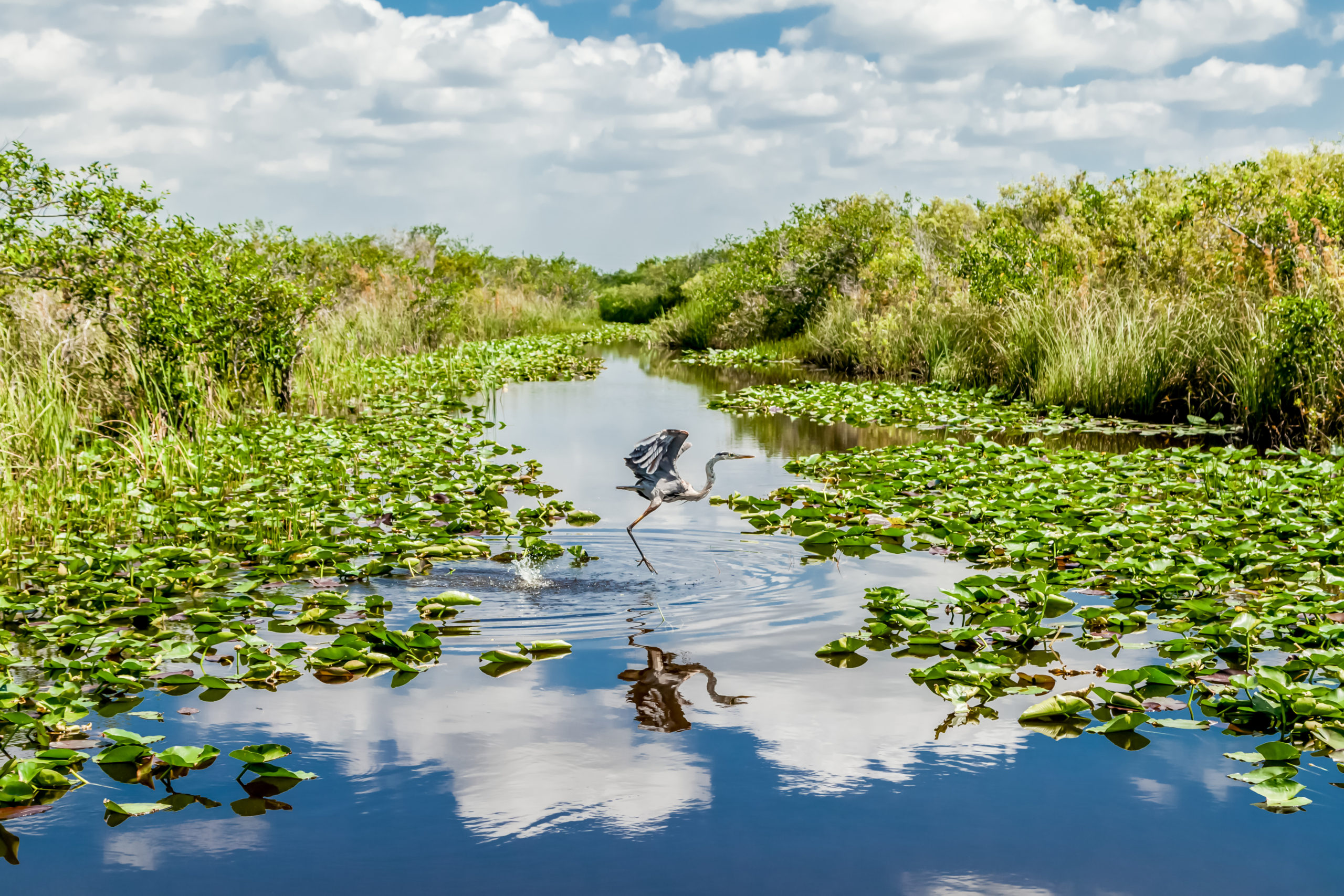
The Everglades in South Florida are a unique environment of vast marshes and grasslands that developed in water flows during wet and dry seasons unlike any other natural habitat in the world. These water flows extend over 200 miles, starting near Orlando and extending to the Florida Keys and are the defining characteristic of the grasslands, marshes, wetlands, coastal estuaries, and near in reefs that create the ecology and natural environment of the southern half of the Florida peninsula.
As the economy of Florida began to expand dramatically after World War II Congress authorized the Central and Southern Florida (C&SF) Flood Control Project. Beginning in the late 1940s this huge hydrological engineering effort led to the development of over 2,000 miles of canals and dikes, 71 pump stations, and 625 culverts that drained over half of the 18,000 square miles of the Everglades.
By the end of the 1970s it had become clear that this overweighted bias towards commercial and economic development had had a devastating impact on the ecosystem. It destroyed the watershed biology by drying up 35,000 acres of wetlands with the associated impact of chasing away 92 percent of the waterfowl, 74 percent of the bald eagles, ruining sport fishing, and conveying tones of cattle runoff into Lake Okeechobee. In the year 2000, 14 miles of the C-38 Canal were restored to natural flow and the Comprehensive Everglades Restoration Project (CERP) was launched by an act of Congress.
Currently efforts are underway to restore the quality, quantity, timing, and distribution of the water flows that encompass the Kissimmee River, Lake Okeechobee, and the Everglades in South Florida. It is believed that ‘getting the water right’ will provide the foundation to begin managing habitat quality, wildlife corridors, invasive special remediation, and establishing a sustainable balance between the intersecting needs of people and the environment. Places like Everglades National Park, Lake Worth Lagoon, and the mangrove estuaries of the Florida Keys may never again be wild unspoiled places, but as essential components of the watershed hydrology and ecology they deserve our attention. All of these restoration efforts have widespread support and enthusiasm, but face significant political and funding challenges.
When the alligators, herons, and panthers are able to live in their own sustainable part of the Everglades we will have accomplished a great feat of ‘rewilding’ that will make the world and our place in it better.
“Yesterday is but today’s memory, tomorrow is today’s dream.” – Kahlil Gibran.
There is no doubt that the cost and economic impact of these four Leviathan Dreams are astronomical and beyond the reach of any current planning or budgeting discussions, but that does not mean that they should not be acknowledged nor discussed. A human planning horizon is certainly shorter than continental hydrological realities. With a bias towards a timeframe of decades with a clarity of purpose and direction and with the realization that ultimate sustainability of our natural environment is dependent upon righting the wrongs of years past the realization of these visions may become inevitable.
Dreams are meant to be out of reach when initially conceived, but progress starts with a single step. For each of these Leviathan Dreams there are efforts, projects, and communities that believe in the goal and effort and will continue to strive and struggle towards these dreams until they are achieved. There could be no better role for the Waterkeeper Alliance than to define and promote this cultural transformation towards the restoration of these iconic watersheds and lead the foot soldiers of watershed advocates that will make it happen.
Pleasant dreams.